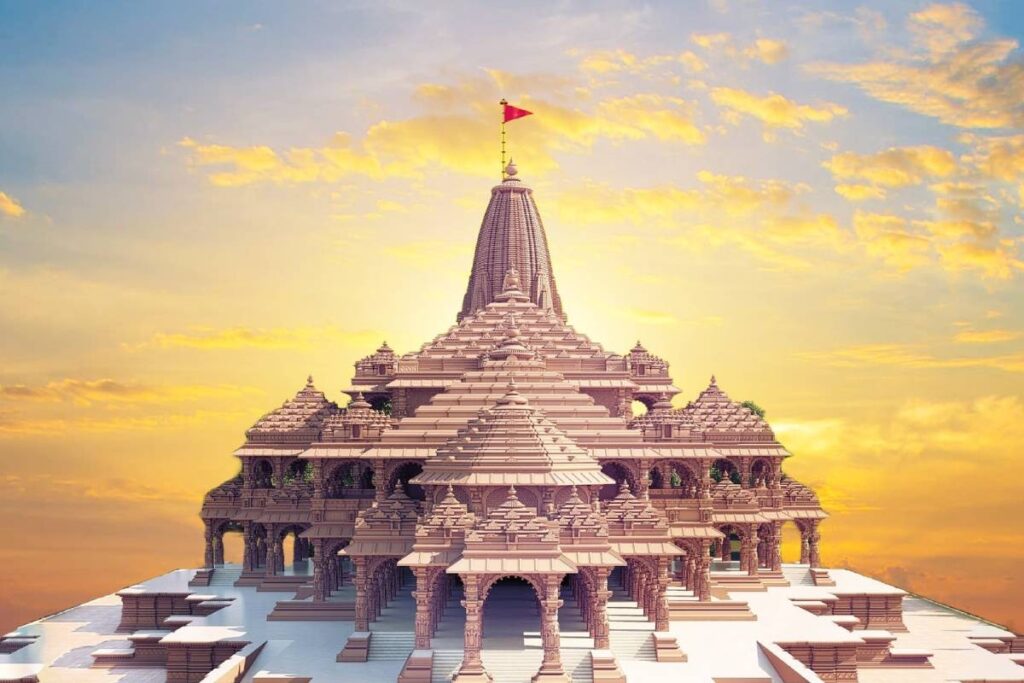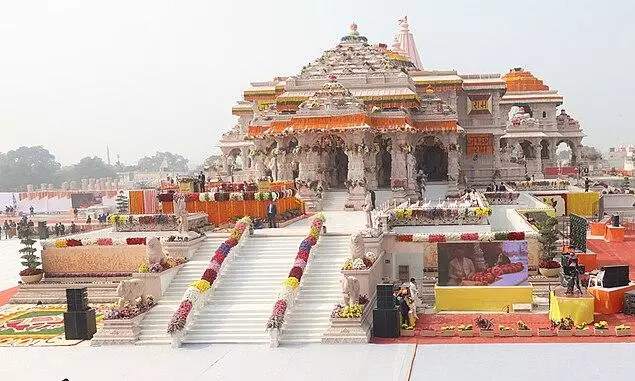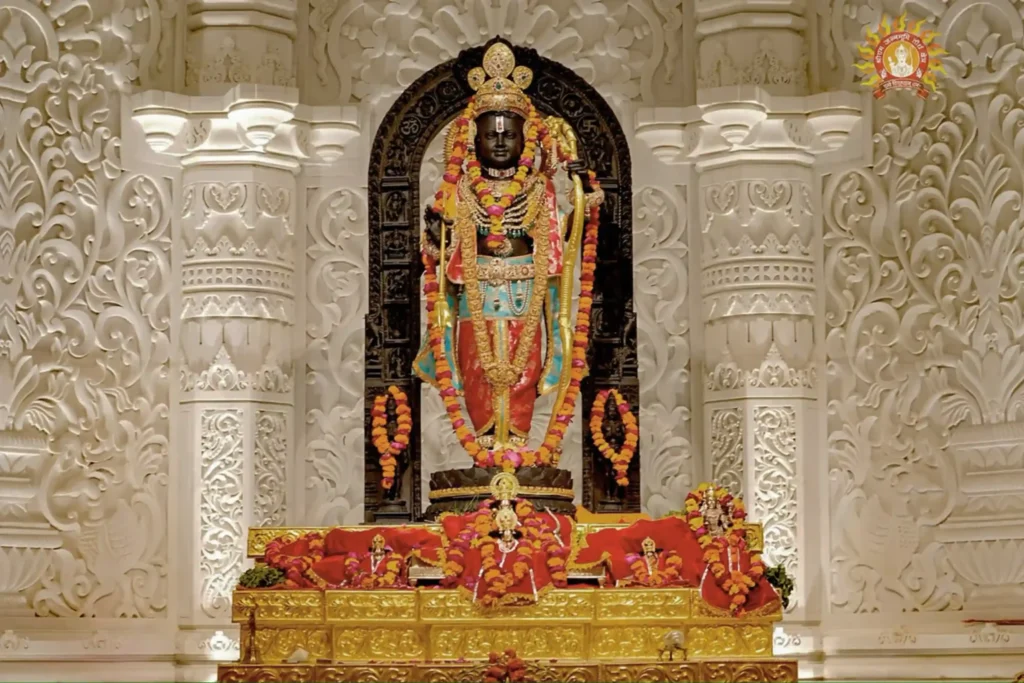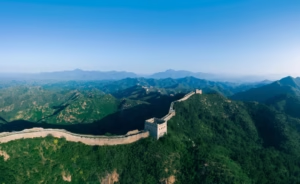Ayodhya Ram Mandir: A Sacred Symbol of Faith and Heritage

1. Introduction
The Ayodhya Ram Mandir is not merely a place of worship; it is a symbol of centuries-old faith, devotion, and cultural identity for millions of Hindus around the world. Built on the birthplace of Lord Rama, one of Hinduism’s most revered deities, the temple stands today as a confluence of spirituality, history, and resilience.
2. Historical Significance
Ancient Legacy
Ayodhya, situated on the banks of the Sarayu River in Uttar Pradesh, is believed to be one of the seven holiest cities (Sapta Puri) in Hindu tradition. According to the Ramayana, composed by sage Valmiki, it is the birthplace of Lord Rama, the seventh avatar of Lord Vishnu. The city’s mention can be traced back to Vedic literature, making it a timeless spiritual hub.
Medieval Era and the Disputed Site
In 1528, the Mughal emperor Babur is said to have ordered the construction of a mosque, later known as the Babri Masjid, on the site believed to be Rama’s birthplace. Over centuries, this led to growing religious disputes.
Local Hindu communities continued to worship at the site, claiming it as Ram Janmabhoomi (birthplace of Rama). Legal and communal conflicts simmered for decades, culminating in the demolition of Babri Masjid on December 6, 1992, which marked a significant turning point in India’s socio-political landscape.
Legal Battle and Supreme Court Verdict
The dispute remained in courts for many years. In November 2019, the Supreme Court of India delivered a landmark verdict, granting the land to Hindus for the construction of the Ram Mandir, while allotting an alternative 5-acre site to Muslims for building a mosque. The judgment was seen as an attempt to balance historical, religious, and legal perspectives.
3. The Grand Construction of Ram Mandir
Foundation and Design
The foundation stone of the Ram Mandir was laid by Prime Minister Narendra Modi on August 5, 2020. The temple’s design draws inspiration from ancient Nagara-style architecture, crafted using traditional methods and Rajasthani pink sandstone without the use of iron.
Architecture Details
- Total Area: Approx. 2.7 acres
- Height: Over 160 feet
- Floors: Three-storey structure
- Pillars: 360 intricately carved pillars depicting scenes from Ramayana
- Main Idol: A child form (Balak Ram) of Lord Rama
The temple is being constructed by Larsen & Toubro (L&T) and overseen by the Shri Ram Janmabhoomi Teerth Kshetra Trust.
Inauguration
The Pran Pratishtha (consecration) of the idol of Lord Rama took place on January 22, 2024, in the presence of top spiritual leaders, dignitaries, and devotees from across the globe.

4. Religious and Cultural Traditions
Daily Rituals
The temple follows Vedic traditions with five main aartis (rituals) daily:
- Mangala Aarti (early morning)
- Shringar Aarti
- Bhog Aarti (midday)
- Sandhya Aarti (evening)
- Shayan Aarti (night)
Devotees offer tulsi leaves, flowers, and sweets to the deity, along with recitation of Ramcharitmanas and Sundarkand.
Festivals Celebrated
The Ram Mandir is now a central pilgrimage site for festivals like:
- Ram Navami: Lord Rama’s birth anniversary.
- Diwali: Celebrated as the day Rama returned to Ayodhya after defeating Ravana.
- Hanuman Jayanti and Vijayadashami also draw thousands of pilgrims to Ayodhya.
During Diwali, the banks of the Sarayu River light up with lakhs of earthen lamps (diyas), setting world records for the number of diyas lit, known as Deepotsav.
https://sypertimes.com/konark-sun-temple-timeless-marvel-of-indian-architecture/
5. Cultural Impact and Revival
Ayodhya as a Global Spiritual Center
The Ram Mandir project has placed Ayodhya on the global religious tourism map. Pilgrims and tourists from across the world are expected to visit, leading to infrastructural development like:
- Ayodhya International Airport (Maryada Purushottam Airport)
- Widened roads, better connectivity
- Museum and Ramayana-themed parks
Promotion of Indian Heritage
The temple’s construction has revived interest in Sanskrit texts, temple art, Vastu Shastra, and Hindu rituals. Artisans from Rajasthan, Odisha, and Tamil Nadu have been engaged to contribute traditional expertise.
The temple is also a living classroom for younger generations to learn about:
- Ramayana
- Bhakti movement
- Hindu philosophy and ethics

6. Social and Political Dimensions
While the Ram Mandir is a religious monument, it has had a profound political impact, shaping national discourse for decades. The Ram Janmabhoomi movement in the 1980s and 1990s played a key role in mobilizing public sentiment and influencing Indian politics.
Many see the temple’s completion as the culmination of a long-standing cultural aspiration, while others continue to debate the historical narrative and its social consequences.
7. Unity in Diversity
Despite historical conflicts, efforts are being made to use the Ram Mandir as a platform for unity and reconciliation. The temple trust has emphasized inclusivity, with donations and volunteers from all regions, castes, and even faiths contributing to its construction.
The message of Lord Rama — righteousness (Dharma), truth (Satya), and service (Seva) — resonates universally, making the temple a beacon of moral and spiritual values for all humanity.
8. Conclusion
The Ayodhya Ram Mandir is not just a building—it’s a resurrection of a civilization’s collective memory, faith, and devotion. As it stands tall on the sacred soil of Ayodhya, it symbolizes not only the triumph of faith over adversity but also the essence of Indian spiritual tradition.
As India moves forward in the 21st century, the temple bridges the ancient and the modern, reminding us that while times may change, the soul of a nation rooted in Dharma remains eternal.
References & Cultural Sources
- Valmiki’s Ramayana – Epic detailing the life and virtues of Lord Rama.
- Tulsidas’ Ramcharitmanas – A devotional retelling of Ramayana in Awadhi.
- Archaeological Survey of India (ASI) – Excavation reports indicating ancient temple remains.
- Supreme Court of India – 2019 verdict on Ram Janmabhoomi-Babri Masjid case.
- Shri Ram Janmbhoomi Teerth Kshetra Trust – Official updates on temple construction.
https://timesofindia.indiatimes.com/india/ayodhya-ram-mandir




